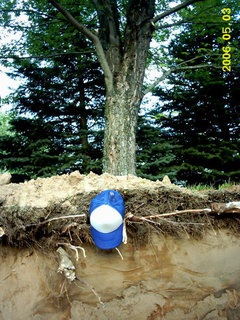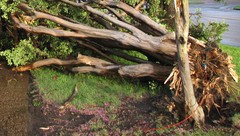i often say a tree is twice as big underground as above
ken_adrian Adrian MI cold Z5
12 years ago
Featured Answer
Sort by:Oldest
Comments (24)
arktrees
12 years agoilovemytrees
12 years agoRelated Professionals
Derry Landscape Architects & Landscape Designers · Edmond Landscape Contractors · Westwood Landscape Contractors · Bridgeview Landscape Contractors · Columbine Landscape Contractors · Huntley Landscape Contractors · San Rafael Landscape Contractors · Spring Landscape Contractors · Kingsburg Landscape Contractors · Fairfax Siding & Exteriors · Poway Siding & Exteriors · Rockford Siding & Exteriors · Glendale Decks, Patios & Outdoor Enclosures · Hockessin Decks, Patios & Outdoor Enclosures · Lansdale Decks, Patios & Outdoor EnclosuresToronado3800 Zone 6 St Louis
12 years agoken_adrian Adrian MI cold Z5
12 years agorhizo_1 (North AL) zone 7
12 years agoToronado3800 Zone 6 St Louis
12 years agoken_adrian Adrian MI cold Z5
12 years agorhizo_1 (North AL) zone 7
12 years agoken_adrian Adrian MI cold Z5
12 years agowisconsitom
12 years agoscotjute Z8
12 years agorhizo_1 (North AL) zone 7
12 years agosaccharum
12 years agoabuse_bot
7 years agoMarie Tulin
7 years agolast modified: 7 years agoken_adrian Adrian MI cold Z5
7 years agofour (9B near 9A)
5 years agoken_adrian Adrian MI cold Z5
5 years agogardengal48 (PNW Z8/9)
5 years agoUser
5 years agobengz6westmd
5 years agoblakrab Centex
5 years agolast modified: 5 years agoUser
5 years ago
Related Stories

PRODUCT PICKSGuest Picks: Flatware to Make You Look Twice
Even everyday meals become an event with utensils that go beyond the ordinary
Full Story
LANDSCAPE DESIGNCalifornia Says Goodbye to the Sprawling Ornamental Lawn
New state rules will effectively limit turfgrass to 25 percent of the landscape in most new and renovated yards
Full Story
FUN HOUZZGuessing Game: What Might Our Living Rooms Say About Us?
Take a shot on your own or go straight to just-for-fun speculations about whose homes these could be
Full Story
MOST POPULARSo You Say: 30 Design Mistakes You Should Never Make
Drop the paint can, step away from the brick and read this remodeling advice from people who’ve been there
Full Story
HOUSEKEEPING20 Things You Might Be Forgetting to Spring-Clean
Clean these often-neglected areas and your house will look and feel better
Full Story
KIDS’ SPACESWho Says a Dining Room Has to Be a Dining Room?
Chucking the builder’s floor plan, a family reassigns rooms to work better for their needs
Full Story
LIFE10 Steps for Saying Goodbye to Sentimental Objects
Are keepsakes cluttering your space and your life? Consider this approach for letting go and moving on
Full Story
KITCHEN DESIGNHouzzers Say: Top Dream Kitchen Must-Haves
Tricked-out cabinets, clean countertops and convenience top the list
Full Story
FUN HOUZZSurvey Says: We’re Scared of Being Home Alone — and Spiders
A new Houzz survey reveals that most of us get spooked in an empty house. Find out what’s causing the heebie-jeebies
Full Story
MOVINGSaying Goodbye to One Home and Hello to Another
Honor your past and embrace your future with these ideas for easing the transition during a move
Full Story









rhizo_1 (North AL) zone 7